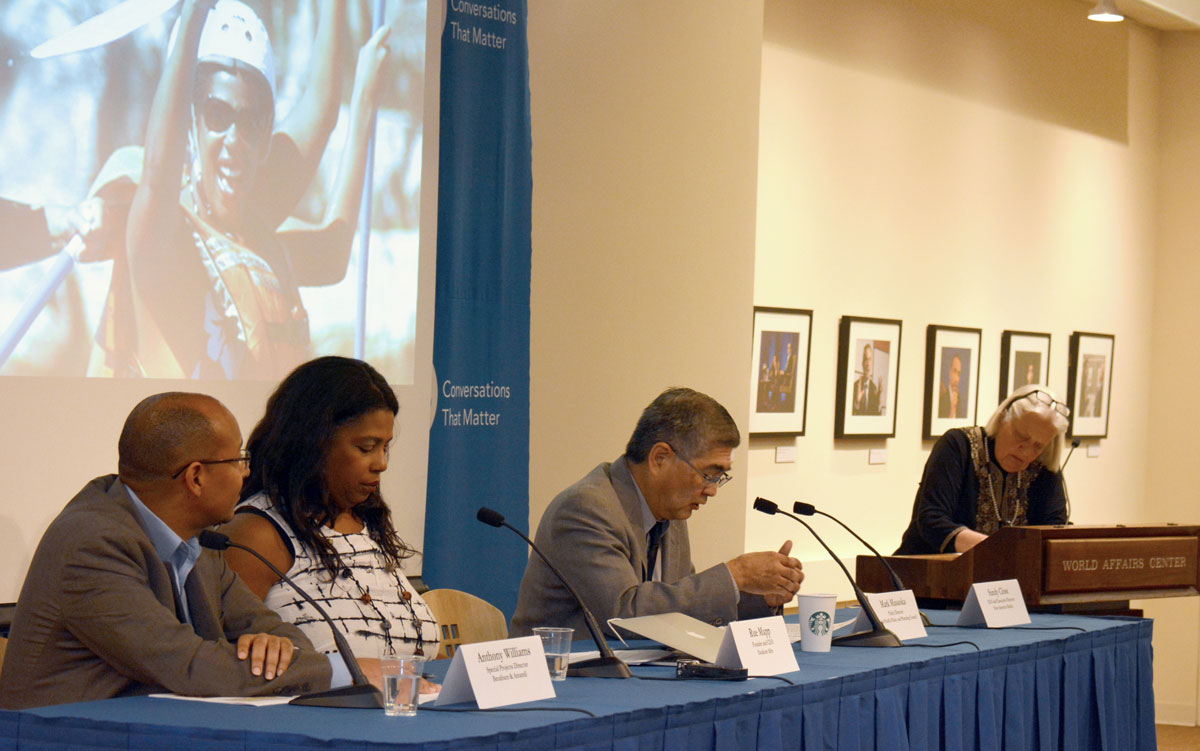OVERWHELMING SUPPORT FOR NATIONAL PARKS
(L-r) Anthony Williams, special projects director with pollster Bendixen and Amandi; Rue Mapp, founder and CEO of Outdoor Afro; Mark Masuoka, policy director for the Asian Pacific Policy and Planning Council; and Sandy Close, executive director, NAM, at a media briefing in San Francisco for the release of the poll. (Amar D. Gupta | Siliconeer)
As the United States marks the centennial anniversary of its national parks, a new poll finds strong bipartisan support for public lands among voters from minority communities, despite an information gap that keeps many from accessing them, writes Peter Schurmann. – @Siliconeer #Siliconeer #NAM #NewAmericaMedia @NewAmericaMedia @NAM #PeterSchurmann #Ethnic #USNationalParks #USNationalPublicLands #NewAmerica #NAMPoll #Next100Coalition #OutdoorAfro
The national poll, “An Untapped Resource: Our National Public Lands and the New America,” found that 92 percent of African-American, Asian-American and Pacific Islander (AAPI) and Latino voters approve of President Obama’s steps to protect public lands, and that 93 percent believe it is important for the next president to do so as well.
The findings challenge the widespread view that communities of color are “not interested” in protecting open spaces, according to Anthony Williams, special projects director with pollster Bendixen and Amandi, which conducted the survey.
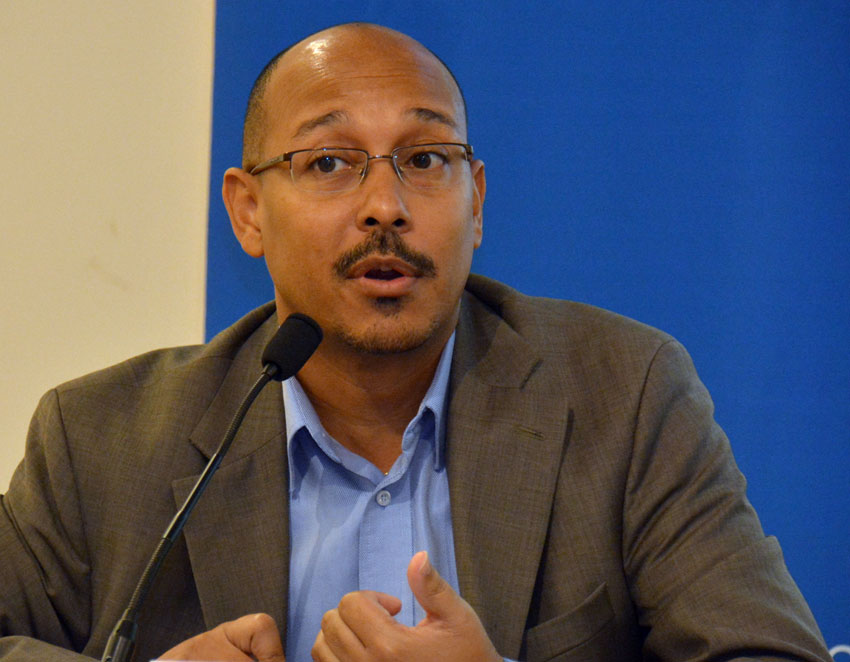
The poll results, Williams said, were “perception shattering.”
Support for public lands among respondents also bridged political divides, he said, with both registered Republicans and Democrats strongly in favor of efforts to preserve and protect national public lands.
The poll, commissioned by New America Media (NAM), surveyed 900 African-American, Latino, and Asian American and Pacific Islander (AAPI) registered voters across the country in English and Spanish. It has a margin of error of plus or minus 3.3 percentage points.
Two-thirds of respondents said they had visited national public lands within the past three years, while 70 percent regularly participate in outdoor activities offered there.
Significantly, 95 percent said it was important to see their communities reflected in national public lands while four out of five expressed support for increasing the diversity in designated sites such as the proposed U.S. Civil Rights Network and Cesar Chavez National Historic Park.
The poll “shows tremendous enthusiasm for national public lands (among communities of color) … and a recognition that they need to be preserved and protected,” NAM Executive Director Sandy Close, told reporters from over a dozen media outlets at a press briefing, Aug. 23.
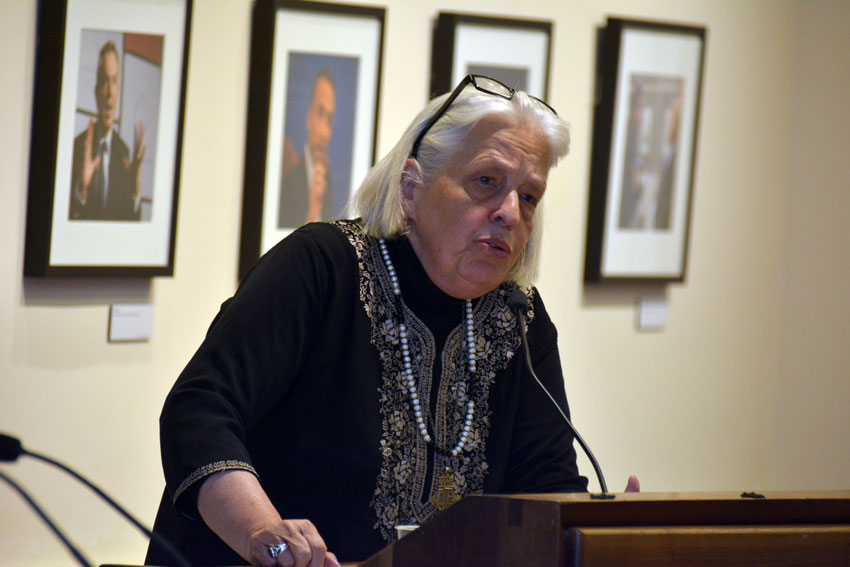
Close noted the challenges that public lands face, ranging from climate change to reduced funding. Some Republican lawmakers – as well as GOP presidential candidate Donald Trump – have also proposed to bring public lands under state control with an eye toward development.
“The fate of our national public lands rests in the hands of communities of color,” that are fast becoming the majority in this country, said Close.
Yet while national parks are “part of our country’s identity … they have not always been reflective of our diversity,” said Rue Mapp, founder and CEO of Outdoor Afro, an organization that leads tours for African Americans to the outdoors in over 30 states.
Statistics show that a majority of visitors and staff at national parks and other open spaces are white, one reason Mapp says people of color shy away from the outdoors. She also cited other barriers, including a lack of gear or equipment, transportation issues and time constraints.
Entrance fees and not knowing park locations were two of the main reasons cited by poll respondents when asked why they do not visit, something speakers blamed on the lack of engagement with communities of color by federal agencies in charge of public lands.
But Mapp said there are other factors. Referencing the famed Billie Holiday song “Strange Fruit,” she pointed to the “history in this country … stories of terror and exclusion” associated with open space. For African Americans, she explained, “there is a cellular memory” of lynch mobs and the vulnerability of being in the outdoors that continues to haunt many.
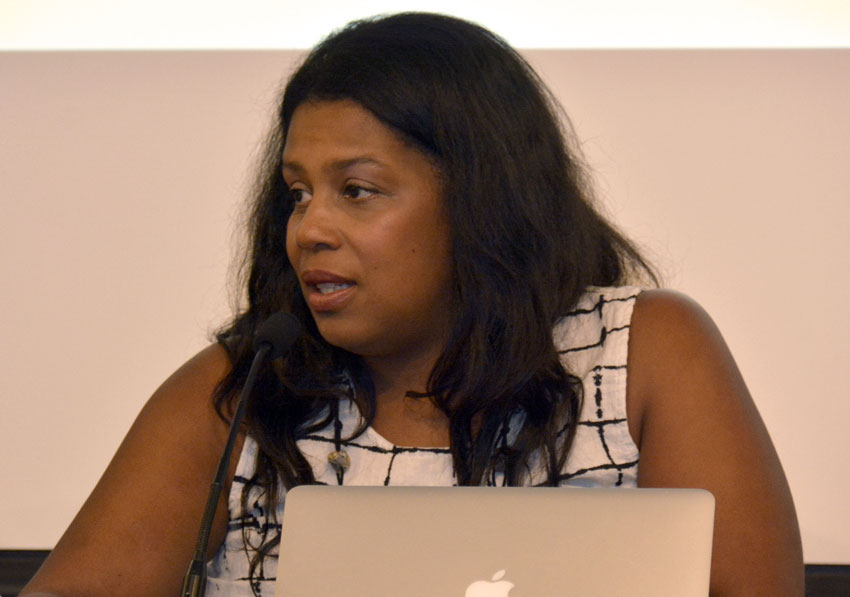
“A big part of our work is to visit these sites for atonement and healing,” said Mapp.
Outdoor Afro is one of over two-dozen organizations that form the Next 100 Coalition, which is working to promote greater diversity in the country’s natural treasures. The coalition partnered with NAM and Bendixen on the release of the poll and plans to use the findings to push the Obama White House to issue a presidential memorandum encouraging greater inclusivity by land management agencies.
“This poll allows us to engage with policy makers definitively,” explained Williams, who said that most of the research done on this topic largely overlooked the views of ethnic communities. “If someone is not doing the research on what communities of color think, that voice is not part of the conversation.”
Mark Masuoka, policy director for the Asian Pacific Policy and Planning Council, part of the Next 100 Coalition, said that among the conservation groups he works with in Southern California, “you rarely see someone who looks like you.”
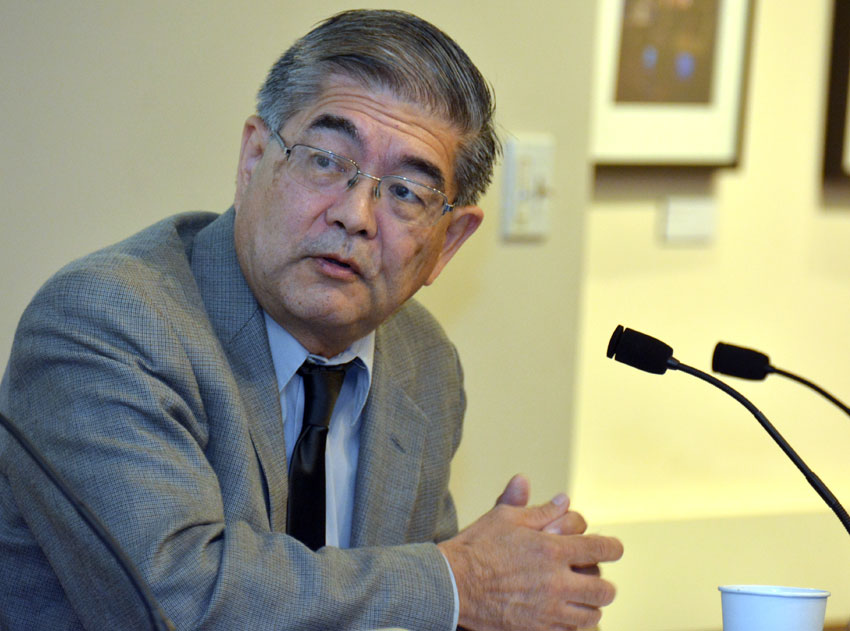
Still, Masuoka pointed to recent gains, including moves by President Obama to preserve national monuments dedicated to Native American, Asian American, Latino and African American histories. He said that pushing for a memorandum would help to further “institutionalize these gains.”
For Williams, the poll’s significance goes beyond preservation.
“This is not just about protecting the land. That’s important,” he said. “But it is just as important to be cognizant of the people who have lived on and shaped the land. That needs to be part of the story.”
